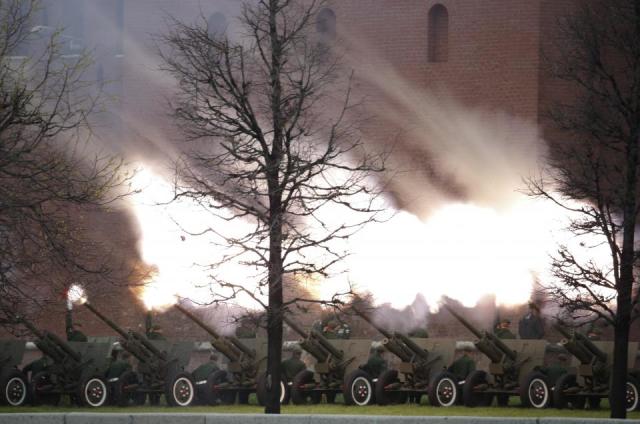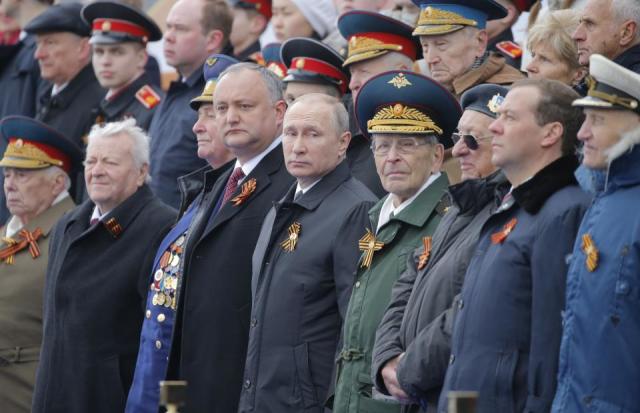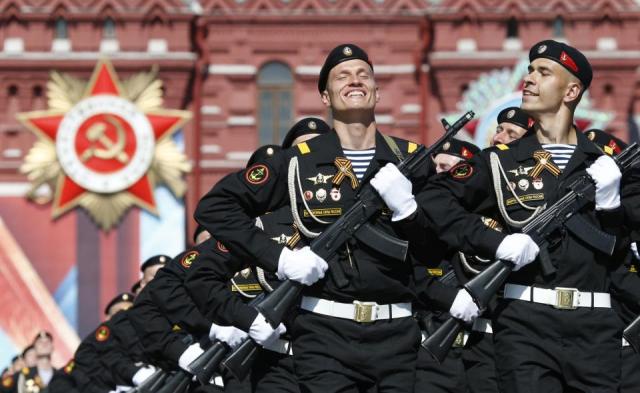There are few days in the
Russian calendar that can lay claim over a single word as May 9 can over
“victory.” The Soviet Red Army’s counter-offensive against Nazi
Germany—which verged on catastrophic in the war’s early days—ended with a
triumphant march into Berlin in 1945.
Even in modern Russia the anniversary remains not
only a massive public celebration, but an intensely personal one for
citizens of Russia and many of the former Soviet republics, whose
collective casualties during World War II exceed 25 million.May 9 has become the day to commemorate that staggering loss of life and one of Russia’s most popular holidays.
Russia marks the anniversary a day after the rest of Europe, which commemorates the end of World War II on May 8. In April and early May 1945, with the Nazis retreating on both the Eastern and Western fronts, German troops had already begun surrendering in a piecemeal fashion. The Nazi regime negotiated a surrender with Britain and the U.S. on May 7 and it came into force the next day.

But a chief concern for Nazi soldiers was being taken prisoner by the Red Army, which already held Berlin. So even when British Prime Minister Winston Churchill and United States President Harry Truman announced the war’s end German soldiers continued fighting Soviet troops until the following day.
Joseph Stalin declared the end of the war on May 9 on Soviet radio: “Your courage has defeated the Nazis. The war is over,” he said.
Under Vladimir Putin Victory Day has become the second most popular anniversary in Russia, only eclipsed by New Year’s Eve in the nation’s affections. According to a survey by the Levada Center, 43 percent of Russians pointed to May 9 as one of the most important holidays of the year compared to 29 percent in 2004.
This increase in popularity has come alongside a government push to
restore symbols of Soviet-era pride, including opting to re-use the
melody for the Soviet Union’s anthem in Russia’s current national
anthem. May 9 marks the culmination of these efforts, as public mourning
marches and military parades now take place nationwide in Russia.

St George’s ribbons are the most recognizable symbol of remembrance in Russia and are as closely associated with Victory Day as poppies are with Armistice Day in Britain and the U.S.
The black and orange striped ribbon can be spotted everywhere from the lapels of coats to the windshields of cars and the headers of newspapers. The symbol dates back to Russia’s Imperial Order of St George and is associated with military glory. It is one of the few symbols introduced by Tsarist forces and retained by the Red Army. Civilians in Russia and many former Soviet countries wear it as a primary sign of homage to military sacrifice on Victory Day but also other days of remembrance.
Most popular: Conductive Spray Paint Can Turn Any Surface Into a Touchscreen
The Red Army used the ribbon’s colors for the World War II veteran’s medal “ For Victory Over Germany ”, adding an engraving of Stalin’s face and the inscription “Our deed is right. We triumphed.”
Around 16,000 soldiers, 200 armored vehicles and 150 planes and helicopters took part in Moscow’s 70th anniversary military parade in 2015—one of the most elaborate military rallies held at the Kremlin’s walls in modern times. The event has repeatedly given the world a first extended glimpse at newly produced Russian military vehicles such as the Armata tank in 2015.
Foreign troops often take part as well, as former Soviet allies annually send honor guards marching under the watchful eye of Putin and their respective leaders, though soldiers from Britain, France and the U.S. have also crossed the Red Square cobbles alongside Russia’s finest in 2010.
Due to
increased political tension over Ukraine and Syria Western leaders have
not joined Putin at the parade since 2014, nor have their men and women
in uniform.

The
march and military parades take place in a handful of large Russian
cities — largely from the so-called “hero cities.” This Soviet-era title
was bestowed on 13 Soviet cities on the eastern front were Red Army and
local fighters scored the most dramatic victories over Nazi forces such
as Volgograd (formerly Stalingrad), Sevastopol and Brest.
Comments
Post a Comment